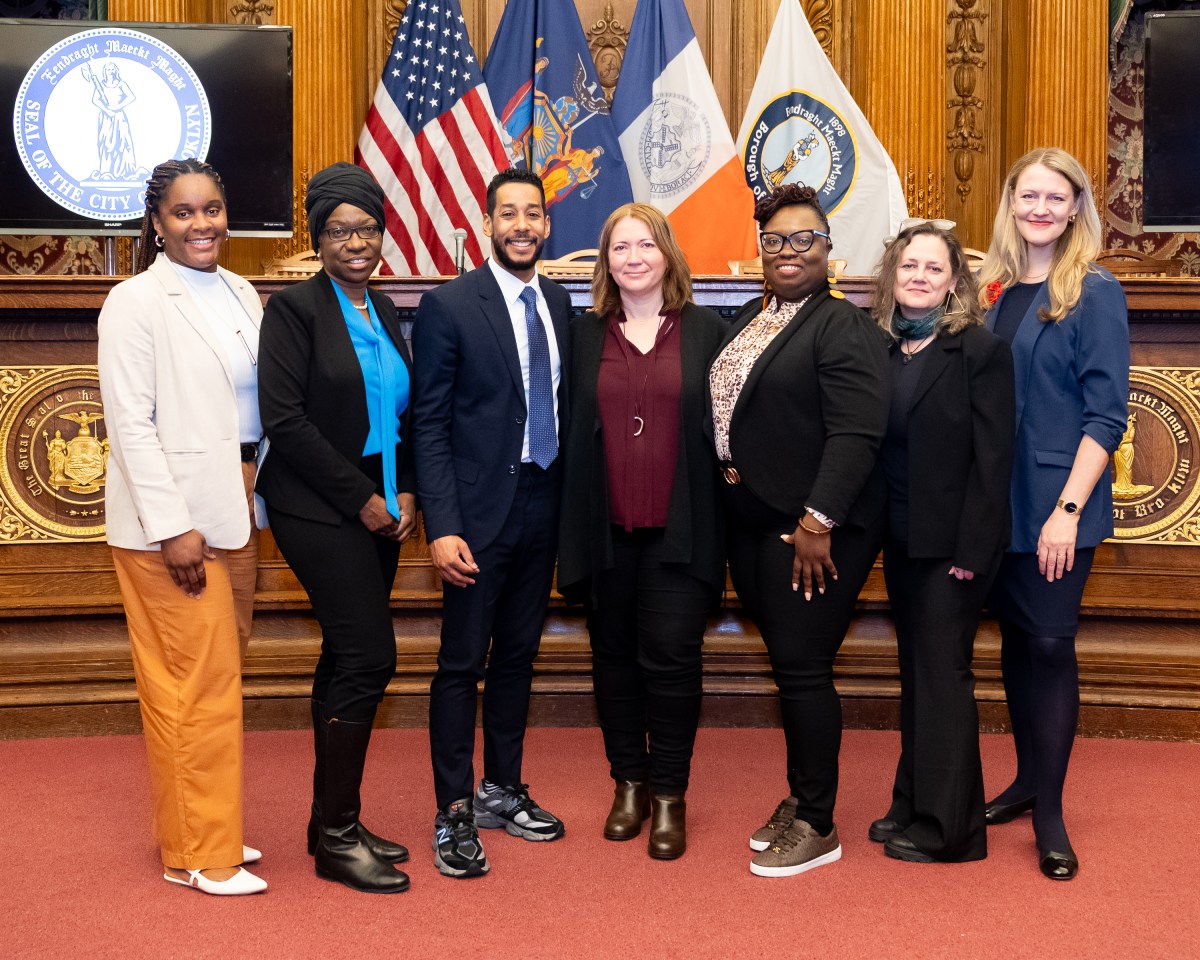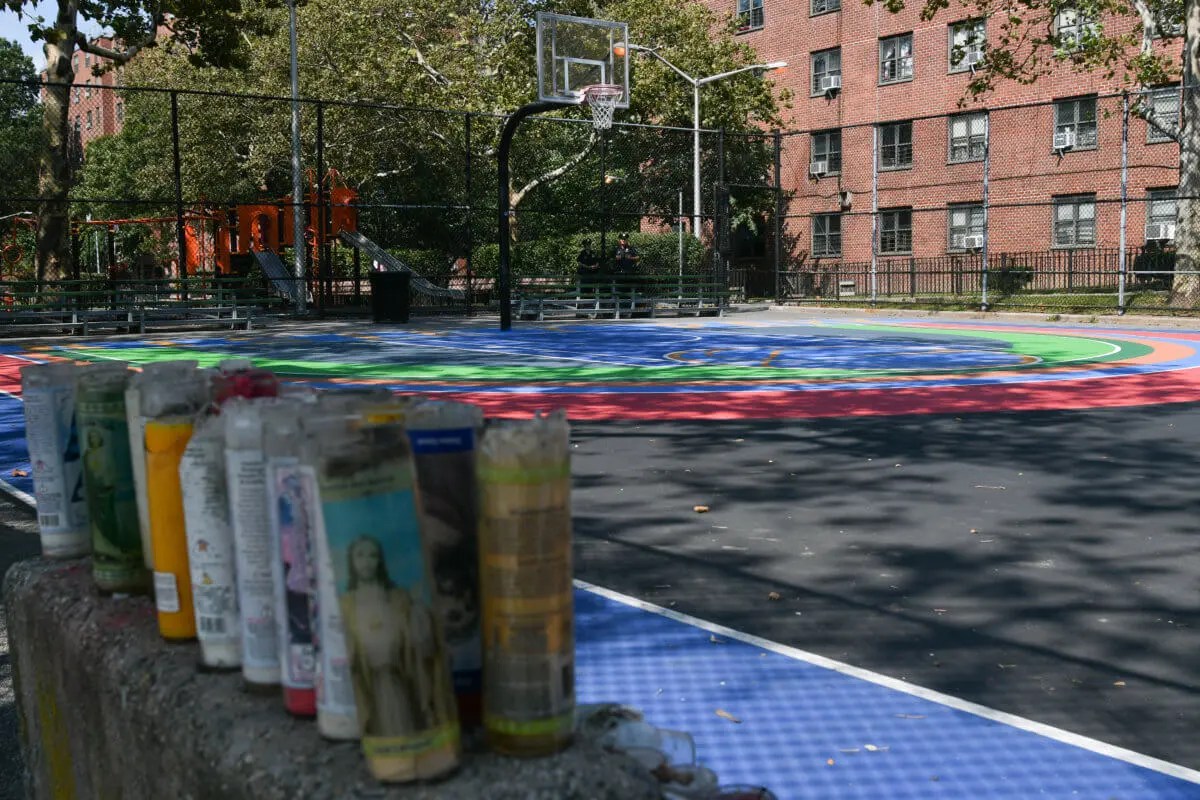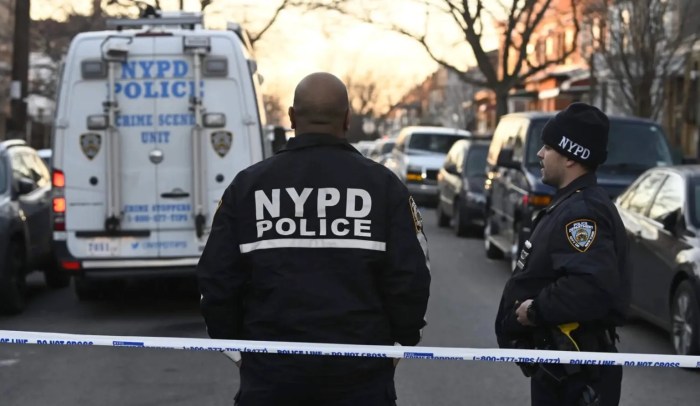
To get a better sense of just how bad air quality is in the Fordham and University Heights neighborhoods of the Bronx, 22-year-old Natalie Ward followed the numbers.
The Fordham University senior, who majors in math, has been working on a major research project for the last eight months documenting the air quality levels at her campus and nearby areas using a portable air quality scanner, database tables and field study. Ward, a Portland, Oregon, native, said she was interested in seeing how the amount of pollutants in the air correlated with the high rates of asthma among children in the Bronx.
Her preliminary findings were startling.
In locations such as Noble Playground Park, near Bronx River Avenue, and Tremont Park, levels of particulate matter, or PM2.5, were notably higher than in locations such as the Fordham campus and the New York Botanical Garden. The pollutant can lead to lung and health problems in humans at high levels, and the borough has already seen a larger share of asthma cases, according to the city’s Health Department.

Roughly 410 out of every 10,000 Bronx children visited the ER for asthma symptoms in 2015, according to the latest data the health department. Citywide the asthma-related ER rate is 223 out of 10,000 children.
"It’s hard to be sitting at a park and see children around the park and look at my device and see these harmful levels," Ward said.
City health experts and environmentalists say Ward’s solo research is critical to improving the conditions in the borough as they paint a more detailed picture of the conditions. The latest Health Department air survey found that Fordham and University Heights had PM2.5 levels of 8.3 micrograms per cubic meter, which is 0.5 micrograms per cubic meter higher than the average for the Bronx and 0.8 micrograms per cubic meter higher than the average for the entire city.
Ward’s research was first reported in Fordham University’s school newspaper, "The Ram," last month.
She said she got the idea for her study while working as a researcher for the Wildlife Conservation Society’s Project TRUE program in the summer of 2017. It was there that she first worked with a PM2.5 scanner and explored topics of urban air quality in the outer boroughs and subways.
"From Project TRUE, I knew I wanted to conduct my own undergrad research," she said. “I really just wanted to see the link between PM2.5 and levels of air quality in my neighborhood."
Ward applied for a grant from Fordham that was used to buy materials for her research — including a portable PM2.5 scanner — and began working on her project in July. She chose locations that were open to the public and also close to major roadways — Noble Playground Park, Tremont Park, and Playground One Thirty-Four — to determine how traffic contributed to asthma. Ward then took air samples from Fordham and the botanical garden, which are far from highways.
So far, Ward’s preliminary findings indicate the atmosphere qualities for Noble Park, Tremont Park, and Playground One Thirty-Four fall under the "Unhealthy for Sensitive Groups" and "Unhealthy" categories under the Environmental Protection Agency’s Air Quality Index (AQI). The campus and botanical garden, however, fell under the "Moderate" category, according to her research.
"Most parks are located near major roadways, so this is a major concern," Ward said.
Ward said she is still surveying the locations, and tracking the PM2.5 changes during the last few months, and will have a full report by the end of the semester in May. Although the work is still preliminary, Melkana Brakalova-Trevithick, the associate chair of Mathematics at Fordham’s Lincoln Center campus, who is assisting her with the project, said they are impressed.
"I’m not really an environmental science teacher, but her work got me interested in how math could be used to serve that," she said. "It’s certainly changed my view of this type of research."
Vijay Limaye, a climate change and health science fellow for the Natural Resources Defense Council, who has also been studying air pollution, said the city’s Health Department has been doing a good job tracking PM2.5 levels throughout the city. There is, however, always a need for more data and more precision in the research. He said Ward’s work is a good step forward in providing the public with information that is crucial to public health policy changes
"We see this type of effort as a powerful way to illuminate the levels of air pollution and lead us to a conversation to eliminate air pollution," he said.
The city’s Health Department acknowledged that more work was needed to combat asthma and poor air quality throughout the city. It has taken steps to reduce the rates in the Bronx with programs such as asthma "case management programs" to help parents care for their children and in-home education on triggers.
"Although New York City air quality has improved for several decades, the Health Department recognizes that there is more work to be done to improve both indoor and outdoor air quality and to reduce asthma rates among city residents," a Health Department spokesman said in a statement.
Ward said she hopes that her work can push other New Yorkers, not just the science buffs, into taking their own steps to track their air quality.
"There needs to me more researchers interested in this topic and more people need to know. They need to be more aware of the harmful particles in their air and health," she said.





























